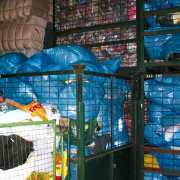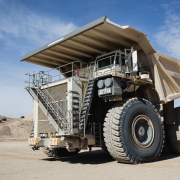CDEnviro: Soil Remediation on Contaminated Land
CDEnviro’s on-site equipment solutions wash and treat contaminated soil and sludge.
Soil pollution is typically caused by industrial activity, agricultural chemicals or improper disposal of waste. The risk of contaminants leaching into water sources can lead to direct contamination of human drinking sources or lead to bioaccumulation of chemicals in animals, which can eventually make their way into the food chain. Therefore, removing pollutants and contaminants in the soil is vital to ensure safety for humans and wildlife. There are several methods available for decontamination.
As a provider of solutions, CDEnviro delivers processing systems– such as equipment solutions for washing and treating contaminated soil and sludge – for clients in Europe, Australia, North America and South Africa. One example is the Swiss group Orllati, one of the leaders in construction in French-speaking Switzerland, which is using CDEnviro’s equipment to process contaminated soils at the treatment facility on its Bioley-Orjulaz site and reuse the materials – gravel and sands – for concrete production.
The facility was installed in 2017 and treats various waste streams including contaminated soils excavated from various polluted sites across Switzerland. It is made up of a HYDRO:GRADE (for the separation of lightweight and fine constituents) and HYDRO:FLO (to minimize the volume of waste to be processed downstream; 90 percent of water can be reused) as well as various other components to ensure the effective treatment of this highly contaminated waste. Orllati uses the clean output products on the same site as their treatment facility to reduce transports and negative impacts on the environment.
Interview on CDEnviro’s Contaminated Soil Washing
The Ireland-based company CDEnviro belongs to the internationally active CDE Group, and was established in 2011 with the main objective to primarily service the environmental wastewater sector in the UK and Ireland. Despite the various solutions the company is offering, GLOBAL RECYCLING Magazine wanted to know more about one specific topic.
Therefore, Andrew Wilson, CDEnviro’s Business Development Manager, answered several questions about the provider’s on-site equipment solutions for washing and treating contaminated soil and sludge containing hydrofluorocarbons, heavy metals and manmade chemicals.
Why has soil remediation on contaminated land become such an important issue?
There are two main drivers which are often interlinked.
A.) Environment and health risks associated with contaminated ground mean governments, local authorities, or private companies need to remediate the affected ground to prevent environmental or human harm.
B.) Land which is contaminated often cannot be utilized or built upon. This presents an opportunity for developers where the cost of remediation is lower than the present or future value of the uncontaminated land then a viable business opportunity presents itself. It is also important to note that science and techniques have advanced significantly in recent years in respect to in situ and ex situ processing. This knowledge enables projects to be viable which previously would have been financially prohibitive.
Contaminants leaching into water sources pose serious risks such as the direct contamination of human drinking sources. In which way do CDEnviro’s on-site equipment solutions help to reduce or even eliminate these contaminants?
By treating the soils through a physical chemical system, contaminants can be liberated and concentrated into certain fractions. Typically, the goal with washing technology is to concentrate contamination into the fine filter cake fraction and light organic fraction. This results in the sand and aggregates being cleaned to an extent where they can go directly back into the ground or be used in concrete or back fill applications. By isolating the contamination, CDEnviro’s on site equipment solutions help prevent leaching, groundwater contamination and other forms of transfer which in turn prevent the associated health risks of the contaminants. We are proud that our solutions are already making a difference in Switzerland, Australia, the USA and elsewhere around the world.
What kind of contamination can be treated with CDEnviro’s on-site equipment solutions?
CDEnviro’s solutions remediate soils containing various contaminants including hydrofluorocarbons, heavy metals, organics and others. Although the profile of man-made chemicals has risen in recent years, many are still in the dark about the harmful risks. These chemicals are emerging contaminants as their full effects are still being studied. However, what we do know is that they have an extreme resistance to environmental breakdown and have been linked to cancer and many other health problems. Many manmade chemicals have now been banned in many countries but were previously used in surfactants, manufacturing, textiles and firefighting foams for many years. In 2000, around 95 percent of the world’s population was thought to be contaminated with these chemicals, they have even been found in polar bears in the arctic. As they are extremely resistant to breakdown, CDEnviro solutions isolate the contamination, removing it from the soils so that they can be safely reused.
Is it possible to adjust these solutions to a customer’s needs?
The solution is always driven by the present contaminants, the level of these contaminants in the input material, and the required level of upgrade required, as well as the volume of material that requires processing. Numerous washing steps can be applied to further improve aggregate quality, and they are normally applied on a case by case basis. This often means a thorough pre-project analysis, which requires an in-depth and accurate understanding of the contaminants present on the site and within different localized areas of the site.
For more information on the CDEnviro contaminated soil washing solution, visit their website https://www.cdenviro.com/solutions/contaminated-soil-washing
(GR12020, Page 22, Photos: CDEnviro Ltd)









